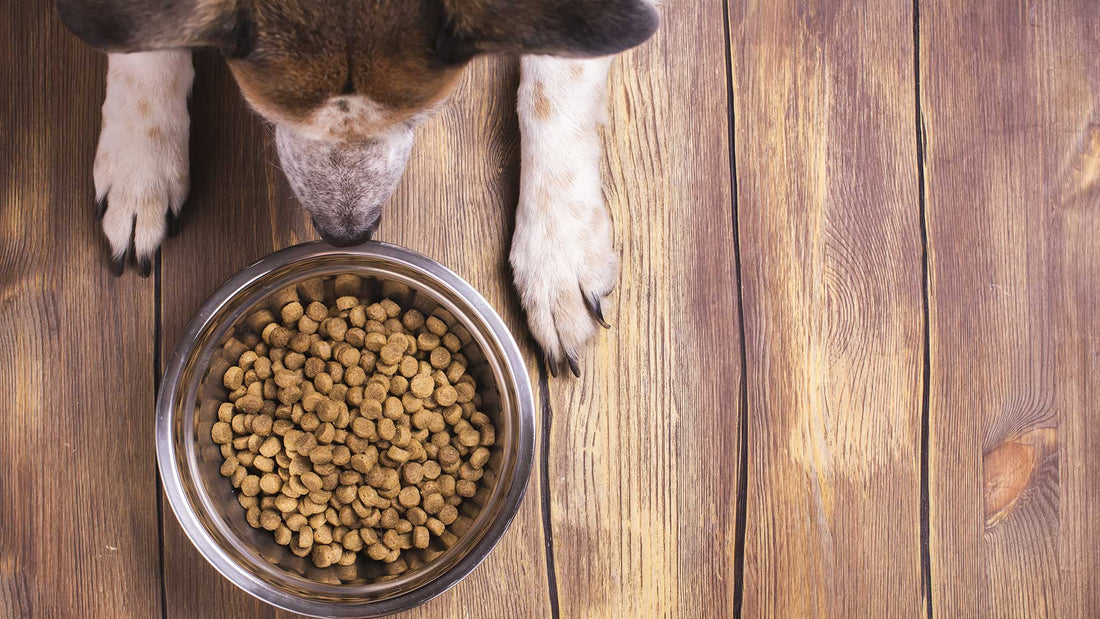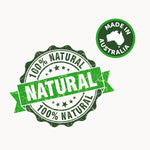
Is Grain-Free Dog Food Good or Bad? The Truth About Carbs in Pet Diets
Grain-free dog food has exploded in popularity, marketed as the healthier alternative to traditional kibble. But is it really better for your dog, or is it clever marketing? While many pet parents are right to be more conscious of nutrition, the grain-free craze hides a bigger problem - carbohydrates.
Pet food companies have quickly caught on to the fact that owners are becoming more educated and conscious about what goes into their pets’ diets. The idea that “grains are bad and unnecessary” has spread widely, and from this belief, the grain-free kibble trend was born. It’s now marketed everywhere as the healthier, more natural choice.
The truth is, grain-free food can be a good option — but only if it meets your pet’s full nutritional needs. Simply seeing “grain-free” on the label doesn’t guarantee a better product. Some grain-free formulas can be nutritionally inferior and even contribute to health issues.
Which raises the real question: are grains truly the problem?
The Real Problem With Grain-Free Dog Food: Carbohydrates
Now, here’s the secret pet food companies don’t want you to know; the real problem ingredient or nutritional analysis (that isn’t required by law to be listed on pet foods) is carbohydrates.
Carbs can come in many different forms, including potato, sweet potato, pasta, lentils, peas (pea starch), chickpeas, tapioca (none of these are grains) plus many more and are just about always included in dry pet foods as this is the easiest way for manufacturers to bind the product together to make kibble (small dry biscuit). You have to actually take a deeper look as to what is in grain free kibble.
Why Too Many Carbs Are Harmful For Dogs
The first thought that might come to mind is, don't we need carbs for energy? This reasoning is based on human nutritional needs, not on the species-appropriate needs of dogs and cats. The optimal diet for dogs and cats is far different from a human's.
Dogs and cats get their energy requirements from protein and fats and are not biologically set up to process large amounts of carbohydrates. Did you know that unused carbohydrates turn into starch, which then turns into sugar?
So basically, a high-carbohydrate-filled diet for your dog or cat is essentially a high sugar diet! And then we wonder why there’s an epidemic of sugar-related health concerns like obesity, cancer and diabetes currently amongst our pets!
Carbs can be included in your pet's overall diet (10% or less), but not in the quantities most kibble companies supply in your pet's food.
To calculate the carb content of your pet's food, try this simple formula written by Dr. Karen Becker (remember that you ideally want it to be 10% or less).
How To Check Carbohydrate Levels In Your Dog’s Food
To see how many carbs are in your dog’s food, use this simple formula from Dr. Karen Becker:
100 – protein % – fat % – moisture % – ash % (if ash isn’t listed, assume 6%) = carbohydrate %.
Ideally, this number should be 10% or less. Anything above that means your pet is eating a carb-heavy diet — even if the bag says “grain-free.”
FAQs About Grain-Free Dog Food
Is grain-free dog food linked to heart disease?
There has been concern around a possible link between grain-free diets and canine dilated cardiomyopathy (DCM). Research is ongoing, but most vets agree the issue is less about “grains” and more about nutrient balance — particularly taurine levels and excess legumes. Always look at the full nutritional profile, not just the grain-free label.
Do dogs actually need grains?
Grains aren’t essential for dogs, but they also aren’t harmful when used in moderation and prepared properly. Whole grains like brown rice or oats can provide fiber, vitamins, and steady energy. The problem is when low-quality grains or fillers dominate the formula.
What should I look for instead of ‘grain-free’?
Check the protein source first. High-quality, species-appropriate proteins like fresh meat should make up the bulk of the diet. Then look at carb percentage (aim for 10% or less) and whether the food includes unnecessary fillers or artificial additives.
Is a raw or fresh diet better than kibble?
Fresh diets generally offer more bioavailable nutrients and fewer processed fillers, making them easier for dogs to digest. While kibble is convenient, fresh food better reflects a dog’s natural nutritional needs.
How can I safely switch my dog from kibble to fresh food?
Transition slowly over 7–10 days. Start by mixing a small portion of fresh food into their regular kibble, gradually increasing the ratio until the kibble is fully phased out. This helps prevent digestive upset.
The Bottom Line On Grain-Free Dog Food
Grain-free doesn’t automatically mean healthier. The real problem is the excess carbohydrates that often replace grains in kibble. While carbs in small amounts are fine, too many can lead to long-term health issues like obesity, diabetes, and cancer.
If you’re unsure about your current pet food, run the formula above and see how it stacks up. For owners who want to avoid the guesswork, a balanced fresh food diet, naturally low in carbs and free from filler, is the simplest way to give your pet the nutrition they truly need.
